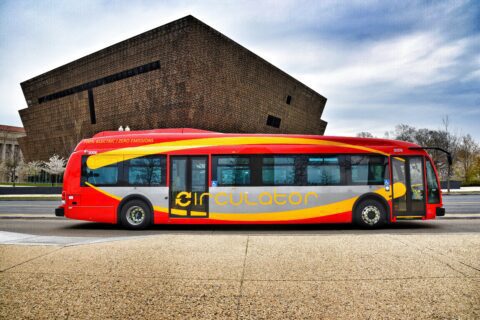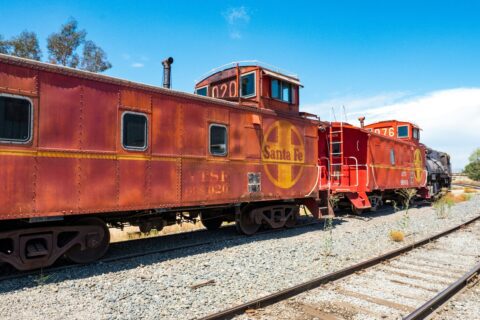Introduction: The Evolution of Transportation
Buckle up and get ready to take a trip through time as we explore the fascinating evolution of transportation! From humble beginnings with ancient modes of travel to the cutting-edge technology shaping our future, join us on a journey that showcases how innovation and ingenuity have continually revolutionized the way we move from point A to point B. Get ready to be amazed by the incredible advancements that have shaped the world of transportation as we know it today.
Ancient Modes of Transportation
Transportation in ancient times was a fascinating blend of innovation and necessity. The earliest modes involved humans walking on foot, gradually evolving to the use of animals like horses and camels for carrying goods and people across vast distances.
In ancient Egypt, the Nile River served as a vital thoroughfare for boats transporting goods and people. The Greeks developed intricate road networks for travel by foot or horse-drawn chariots, connecting their city-states and facilitating trade.
The Romans revolutionized transportation with the construction of an extensive network of roads that spanned their vast empire, enabling efficient movement of troops, goods, and ideas. In East Asia, the Silk Road facilitated trade between China and Europe through a complex system of caravan routes.
Throughout history, civilizations have showcased ingenuity in developing transportation systems tailored to their unique environments and needs. These ancient modes laid the foundation for future advancements in transportation that continue to shape our world today.
Industrial Revolution and the Rise of Railways
During the Industrial Revolution, a significant shift occurred in transportation with the rise of railways. Steam-powered locomotives chugged along iron tracks, revolutionizing how goods and people moved across vast distances. The invention of the steam engine by pioneers like George Stephenson paved the way for faster and more efficient travel.
Railways connected cities and industries like never before, fueling economic growth and transforming societies. The creation of standardized time zones was necessary to keep up with train schedules crisscrossing continents. People could now travel long distances in a fraction of the time it took by horse or carriage.
The iconic image of a steam train billowing smoke as it thundered down the tracks became emblematic of progress and modernity. Railways became lifelines for trade, communication, and expansion during this era of rapid industrialization.
The Invention of the Automobile and its Impact on Society
The invention of the automobile revolutionized transportation in ways never imagined before. With the creation of the first gasoline-powered car by Karl Benz in 1885, society was set on a new course towards increased mobility and freedom.
No longer bound by the limitations of horse-drawn carriages, people could now travel farther and faster than ever before. The automobile became a symbol of status and modernity, transforming how individuals viewed both themselves and the world around them.
As more cars hit the roads, infrastructure had to adapt with the construction of highways and road networks. This shift not only impacted urban planning but also influenced social interactions as communities became more interconnected than ever.
The introduction of automobiles brought about changes in industries ranging from manufacturing to oil production, shaping economies worldwide. Additionally, it sparked advancements in technology and design that continue to influence automotive innovation today.
Air Travel: From the First Flight to Modern Day Aviation
The idea of taking to the skies has always captured the human imagination. From the Wright brothers’ historic first flight in 1903 to modern-day aviation, air travel has revolutionized the way we connect with each other and explore the world.
In its early days, airplanes were rudimentary and flights were limited in range and duration. However, as technology advanced, aircraft became faster, safer, and more efficient. The introduction of jet engines in the 1950s paved the way for commercial air travel on a global scale.
Today, we can fly to almost any corner of the globe within hours. With state-of-the-art planes equipped with cutting-edge amenities and safety features, flying has become not just a mode of transportation but an experience in itself.
Whether you’re traveling for business or leisure, air travel offers unparalleled convenience and speed. It’s fascinating to see how far we’ve come since that fateful day at Kitty Hawk – soaring through clouds at incredible speeds is now a reality for millions around the world.
The Digital Age and Advancements in Transportation Technology
In the digital age, transportation technology has seen rapid advancements unlike ever before. With the rise of GPS navigation systems, commuters can easily navigate unfamiliar routes with just a few taps on their smartphones. Ride-sharing services have revolutionized how people move around cities, offering convenient and cost-effective alternatives to traditional taxis.
Moreover, electric vehicles are becoming increasingly popular as concerns for the environment grow. Companies like Tesla are leading the way in producing sleek and eco-friendly cars that are reshaping the automotive industry. Additionally, developments in autonomous driving technology have paved the way for self-driving cars that could potentially make roads safer and more efficient.
Furthermore, transportation apps allow users to seamlessly plan their journeys by integrating various modes of transportation such as buses, trains, bikeshares, and even scooters into one platform. The digital age has truly transformed how we think about getting from point A to point B.
Future Innovations: Hyperloop, Self-Driving Cars, and Beyond
With the rapid advancements in technology, the future of transportation is looking more innovative than ever before. One of the most exciting developments on the horizon is the Hyperloop – a high-speed transportation system that could revolutionize how we travel. Imagine being able to reach your destination at speeds exceeding 700 mph in a vacuum-sealed tube – it’s like something out of a sci-fi movie.
Another game-changing innovation is self-driving cars. These autonomous vehicles have the potential to make roads safer and reduce traffic congestion. With AI-powered systems taking over driving duties, commuters can sit back and relax during their daily commute, freeing up valuable time for other activities.
But beyond these already mind-blowing innovations, researchers are exploring even more futuristic modes of transportation such as flying taxis and underground tunnels for hyper-fast travel. The possibilities seem limitless as we continue to push boundaries and redefine what is possible in the world of transportation.
Conclusion: How Transportation Continues to Shape Our World
Transportation has been a driving force in shaping the world we live in today. From the humble beginnings of ancient modes of transportation to the high-speed innovations of the digital age, our ability to move from place to place has transformed societies and connected cultures like never before.
As we look towards the future, with advancements such as hyperloops and self-driving cars on the horizon, it is clear that transportation will continue to evolve and revolutionize how we travel. The impact of these developments extends beyond mere convenience; they have profound implications for sustainability, efficiency, and accessibility.
In essence, transportation is not just about getting from point A to point B—it’s about enabling progress, fostering connections, and propelling us towards a more interconnected world. So next time you hop into a vehicle or board a plane, take a moment to appreciate the incredible journey that transportation has taken us on—and get ready for where it will take us next.







